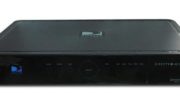Here’s a tough question for all of you who want to build the DIRECTV system of your dreams. Back in the ’00s, it used to be simple: DIRECTV dishes would feed two receivers. Beyond that you needed a multiswitch. Then SWM technology came around and you had two choices: the SWM-enabled LNB or an external SWM multiswitch. The LNB was easier to install but not adaptable, while the external version gave you a lot more flexibility. But really, it was still a pretty easy decision: if you only needed 8 tuners and didn’t think you’d need more, you got the LNB. If you needed to support 16 tuners or needed to keep older non-SWM receivers in the mix, get the multiswitch. Those were the old days and things are totally different now.
Now, it’s harder to decide. DIRECTV’s latest LNB does 13 tuners on a single wire reliably. The external multiswitch supports twice as many: 26 tuners. Remember that these are tuners, not boxes. Here’s a tutorial that will explain it all for you.
Do you still use older receivers?
One of the biggest reasons to use a SWM module rather than an LNB is the need to run older receivers. If you’re using any receivers besides the HR54 Genie or HS17 Genie 2, you might fall into this category. Some very old receivers don’t support SWM technology at all. We recommend the SWM-16 multiswitch for these receivers. It’s old tech, but it’s still available at Solid Signal. It lets you run SWM lines to your newer receivers and non-SWM lines to the older ones.
Do you have very long cable runs?
Here’s something really important. When you come out of an external SWM module, you get two outputs that have full signal strength (generally about -26dBm) right at the SWM. If you add a single 8-way splitter for a typical loss of 14dBm, you’re at -40dBm from each output. Then, you lose about 6dB for each 100 feet of cable. (DIRECTV’s standards suggest that signals at the receiver should be less than -50dBm) If you use a SWM LNB and you need to put a 2-way splitter and an 8-way splitter because you’re feeding just that many boxes, then you lose an additional 3dB, plus you have all the loss from the dish to account for. By the time you get to the receiver your signal could be 5-7dB lower with a SWM LNB than with an external switch.
If you’re talking about really long distances, the external multiswitches let you run four lines and use an amplifier like our AT&T trunk amplifier to add 20dB. You can’t really amplify a signal from a SWM LNB. That’s worth thinking about if you’re looking at a really large home or building.
You can’t really expand if you use an LNB.
It’s no big deal if you can’t imagine going past 13 tuners, after all that’s enough for a Genie 2 and its clients, and that’s all you’ll have in most homes. That’s a lot. But if you’re building a man-cave or just like to watch a lot of TV, that may not do it for you. Once you put in that SWM LNB, you’re pretty much locked in. You can always replace it with a non-SWM LNB but why not do it right the first time? If you have a non-SWM LNB, you can add a virtually limitless number of external SWM modules to it, far more than you’d ever really want or need in a single-family home.
Of course, the choice is up to you. It’s getting harder and harder to avoid the lure of a single line from the dish, which is of course exactly what DIRECTV wants. They want you to have a simple, easy install, one that will work for 99.9% of homes. And then, if you want more, you have options. Sounds like a good deal to me.
Get what you need from Solid Signal
Whether you need the parts for an ultimate installation or just some good advice, you’ll find it all when you shop at Solid Signal. Need help? Try our live chat, or call us at 888-233-7563 during East Coast business hours. If it’s later, fill out the form below and we’ll get back to you, usually within 24 hours.





